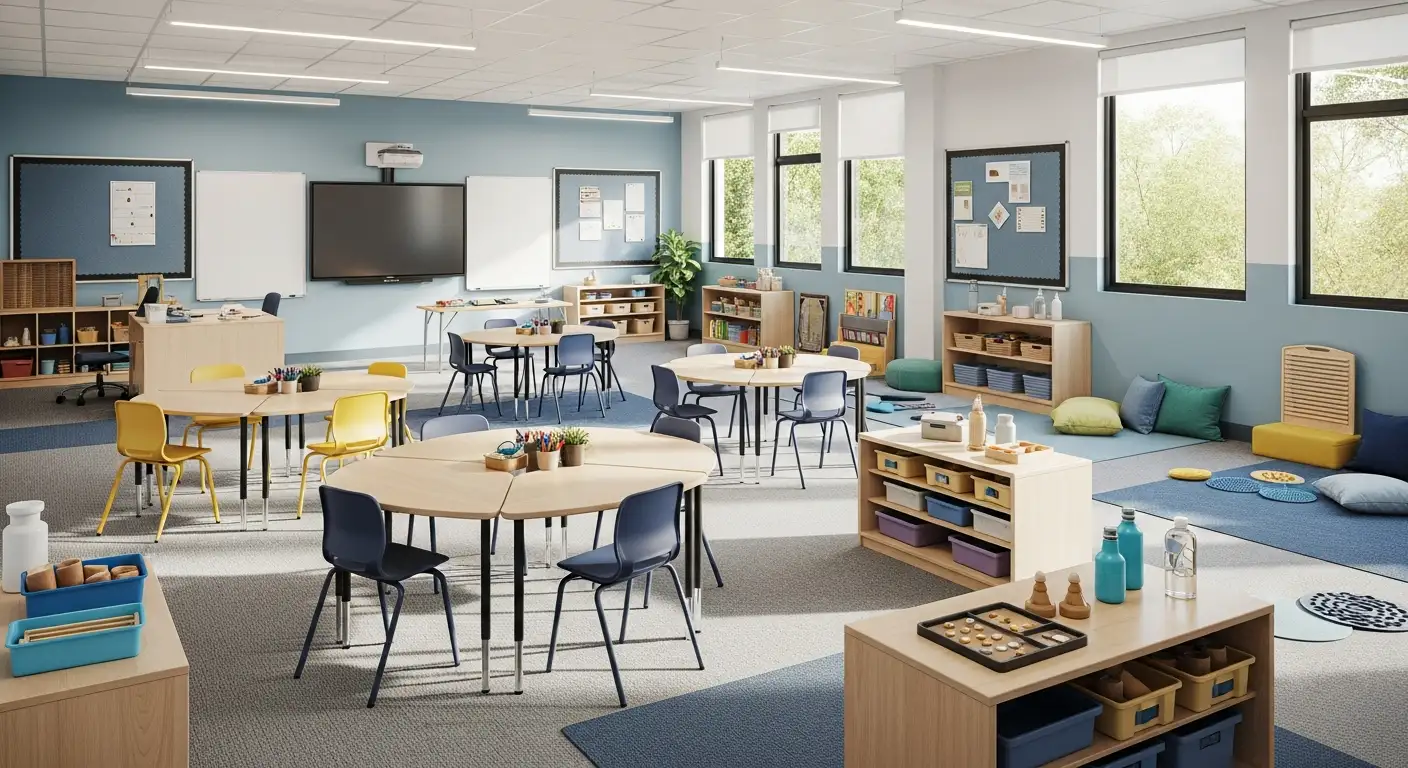Introducing Pairing in ABA Therapy
Applied Behavior Analysis (ABA) therapy is a foundational approach used to support individuals with autism in developing communication, social, and daily living skills. At the heart of effective ABA therapy lies 'pairing,' a crucial initial process where therapists focus on forming a positive and trusting relationship with the child. This article explores the vital role of pairing in ABA, highlighting how it enhances learning readiness, reduces anxiety, and lays the groundwork for successful behavioral interventions.
What is ABA Therapy and the Role of Pairing?

Definition and goals of ABA therapy
Applied Behavior Analysis (ABA) therapy is a science-based method focused on improving skills and behaviors in individuals with autism. It uses principles of learning and reinforcement to encourage positive behaviors such as communication, social skills, attention, and daily living tasks. Simultaneously, it aims to reduce challenging or harmful behaviors. Professionals design personalized programs based on detailed assessments and use various techniques like discrete trial training and play-based methods to promote independence and functional abilities. Research shows ABA can significantly enhance developmental outcomes and quality of life.
How pairing supports ABA therapy
Pairing is the vital process of building a positive, trusting relationship between the therapist and the learner at the onset of ABA therapy. Therapists engage children in preferred activities without any demands, associating themselves with enjoyable experiences such as playing with favored toys or singing songs. This approach makes therapy feel safe and fun, reducing anxiety and resistance. Establishing this rapport opens the child to learning and participation, promoting motivation and better progress toward therapeutic goals.
Key behavioral principles underpinning pairing
Pairing employs core behavioral principles including positive reinforcement and motivating operations. The therapist becomes a conditioned reinforcer by consistently associating themselves with rewards and preferred activities. This association increases the child's willingness to engage and learn. Continuous personalization, gradual introduction of demands, and consistent reinforcement make pairing an effective foundation for teaching new skills and generalizing them across different settings. By creating a receptive environment, pairing enhances both the child’s comfort and readiness to absorb new behaviors in ABA therapy.
Who Provides ABA Therapy and How Pairing Fits Into Professional Practice

Professionals Delivering ABA Therapy
ABA therapy for individuals with autism is provided by qualified professionals including Board Certified Behavior Analysts (BCBAs), licensed therapists, and Registered Behavior Technicians (RBTs). These experts utilize evidence-based approaches derived from behavioral science to craft and oversee personalized intervention plans. Their work often involves analyzing behavior patterns, employing positive reinforcement, and adapting strategies to meet the unique needs of each learner.
Settings and Collaborative Aspects of Therapy
ABA services occur across multiple environments such as homes, schools, clinics, and community settings. Therapists frequently collaborate with families, educators, and other care providers to ensure consistency and effectiveness in treatment. Additionally, access to ABA may be facilitated through public systems like regional centers, schools, or private insurance, allowing services to be tailored appropriately.
Pairing as a Foundational Step in Professional ABA Practice
Pairing serves as a fundamental early step within ABA therapy. It establishes rapport and trust between the therapist and the child by associating the therapist with enjoyable activities and preferred items, without placing initial demands. This positive relationship reduces anxiety and resistance, enhances the child's motivation, and creates a safe learning environment. Through pairing, therapists better understand individual preferences, which informs tailored intervention and supports greater engagement across therapy sessions.
Key Benefits of Pairing in Early ABA Therapy

Building rapport and trust
Pairing in ABA therapy begins with creating a strong, positive relationship between the therapist and the child. This trust makes therapy feel safe and welcoming, encouraging the child to engage without fear or hesitation. Therapists join the child in activities they enjoy, such as playing with favorite toys or singing songs, which helps establish the therapist as a source of comfort and fun.
Reducing anxiety and resistance
An important benefit of pairing is its ability to reduce anxiety and resistance during sessions. By providing access to preferred items and activities without demands, therapists ease the child's stress and promote a calm environment. This reduced anxiety leads to fewer problem behaviors and a greater willingness to try new things.
Enhancing motivation and engagement
Pairing establishes motivation by associating the therapist with positive experiences and reinforcement. When children view therapists as a source of enjoyment, they show increased participation and openness to learning. This heightened engagement supports the development of communication and social skills crucial for their growth.
Creating a safe and enjoyable learning environment
Pairing makes therapy sessions enjoyable and non-threatening, fostering a space where children feel comfortable exploring new skills. Activities are carefully tailored to each child's preferences, ensuring that therapy is not only effective but also fun. This enjoyable atmosphere lays the groundwork for successful teaching and behavior change.
Positive effects on long-term therapy outcomes
Effective pairing contributes to lasting progress by improving the child's ability to generalize skills across settings. Children recover from frustration more easily, maintain motivation, and demonstrate greater independence. Ultimately, this approach enhances the overall quality of life for children with autism by supporting consistent growth and adaptive development.
Techniques and Strategies to Successfully Implement Pairing

Using Preferred Items and Activities
Effective pairing starts with the therapist incorporating the child’s favorite toys and activities into sessions. This approach helps create positive associations, making interactions enjoyable and reinforcing the therapist as a source of fun and comfort. Therapists often join the child in playing with preferred items like toys or games without asking for anything in return, establishing a foundation of trust and motivation.
Personalizing Engagement Based on Child Preferences
Personalization is essential for successful pairing. Therapists observe each child to identify unique interests and reinforcers. These preferences dictate which activities or rewards are used, ensuring that the child feels understood and valued. This tailored approach enhances engagement and encourages voluntary participation.
Incorporating Play and Sensory Activities
Pairing naturally involves engaging children through play and sensory experiences. Activities like exploring sensory rooms, drawing, singing, or blowing bubbles can reduce anxiety and increase willingness to try new things. These fun, no-pressure interactions help children associate therapy with positive feelings.
Gradual Introduction of Demands
Once rapport is established, therapists slowly introduce simple demands during or after preferred activities. This gradual progression helps avoid resistance and builds the child’s tolerance for learning tasks. Consistent positive reinforcement during this phase maintains motivation and supports skill acquisition.
Role of Parents and Therapists in Pairing
Both therapists and parents play vital roles in pairing. Therapists lead structured sessions using specialized techniques, while parents extend pairing strategies at home by participating in favorite activities without demands, offering treats, and maintaining a positive tone. This consistency across settings strengthens trust and generalizes therapeutic gains.
Together, these strategies create a warm, motivating environment that fosters learning and supports children with autism on their developmental journey.
Pairing’s Impact on Behavioral Goals and Generalization of Skills

Supporting Communication and Social Interaction
Pairing plays a vital role in fostering communication and social skills in ABA therapy. By building a trusting, positive relationship, therapists encourage children to engage and interact more freely. This foundation reduces anxiety, making it easier for children to express themselves through vocal or gestural mands, which are key communication methods taught in therapy.
Reducing Problem Behaviors
An effective pairing reduces resistance and problem behaviors by creating a safe, enjoyable learning space. When therapists join children in preferred activities without demands, it lowers frustration and stress. As a result, children show fewer challenging behaviors and are more open to participation.
Facilitating Skill Acquisition and Behavior Change
Pairing establishes the therapist as a conditioned reinforcer, meaning the child begins to associate the therapist with positive experiences. This connection increases motivation, allowing children to learn new skills more readily. Therapists use personalized strategies tailored to each child's interests and needs, continually reinforcing progress through enjoyable interactions.
Generalizing Skills Across Settings
One critical outcome of pairing is the generalization of learned skills beyond the therapy environment. Because pairing creates positive associations and trust, children are more likely to apply social and communicative skills in home, clinic, and community settings. This generalization supports better adaptive functioning and social participation.
Linking Pairing to Broader Goals of ABA Therapy
Ultimately, pairing supports the broader objectives of ABA therapy by promoting communication, social engagement, and independence. The positive relationships formed through pairing facilitate consistent, effective learning, which aligns with ABA’s mission to improve quality of life for individuals with autism. Through this foundational process, therapy not only teaches skills but also fosters motivation and emotional readiness essential for ongoing development.
Why Pairing is a Pillar of Effective ABA Therapy
In the initial phases of ABA therapy, pairing plays an indispensable role by establishing a foundation of trust, enjoyment, and motivation for children with autism. This process not only eases anxiety and resistance but also fosters engagement, paving the way for successful behavioral interventions. By integrating pairing strategies, therapists and families can create a nurturing environment that underpins skill development, communication growth, and behavioral improvements. Ultimately, pairing transforms therapy from a clinical process into a positive experience—one that supports lasting progress and enhances quality of life for learners on the autism spectrum.
References
- The Benefits of Pairing in ABA Therapy
- Pairing in ABA: Building Trust Before Teaching
- Unlocking Potential: The Importance of Pairing in ABA ...
- The Impact of Pairing Sessions in ABA Therapy
- Implementing Pairing Manding with Reinforcement
- Applied Behavior Analysis (ABA)
- Applied Behavior Analysis (ABA)
- 5 Benefits Of ABA Therapy For Autism



